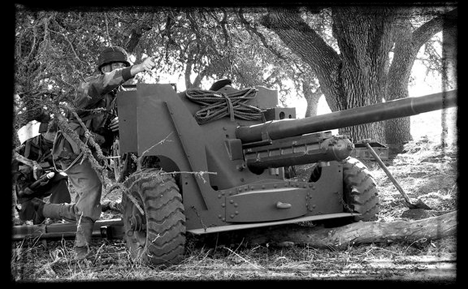 |
||
|
1st Airlanding Anti-Tank Battery, Royal Artillery
|
||
 |
||
|
The Battery was formed in Barrow-in-Furness in 1938 as the 56th Anti-Tank Regiment, having drawn its men from the 4th Battalion The King's Own Royal Regiment (Lancaster), a Territorial Army formation. The Regiment served in France with the British Expeditionary Force, where it was later detached to become a part of 'Macforce', and was subsequently responsible for the destruction of 25 German armoured vehicles. Evacuated to England from the Dunkirk beaches, its strength was reduced to that of a battery and it was renamed the 223 (Independent) Anti-Tank Battery, attached to the 31st Independent Infantry Brigade which, in December 1941, would be redesignated the 1st Airlanding Brigade. In the meantime the Brigade was based in Wales, where it trained extensively in the Black Mountains to assess the practicalities of such a unit acting as 'pack' infantry over such rough terrain, using horses and mules in place of vehicles. Upon conversion to the airborne role, the Battery was renamed the 1st Airlanding Anti-Tank Battery. Shipped to North Africa in May 1943, the Battery flew in Horsa gliders to accompany the 1st Parachute Brigade in its assault upon Primosole Bridge in Sicily, and this was the first time that British artillery had been flown into action. As a consequence of the scattered drop the Battery was only able to account for three of its guns, which were put into position around the bridge. From here the Battery accompanied the rest of the Division to Italy. At this time, airborne anti-tank batteries consisted of four 6-pounder guns in each of its four Troops, however a reorganization occurred shortly before Arnhem whereby this was increased in the 1st Battery to six Troops. A, B, C and the new Z Troops retained their 6-pounders, but D and P Troops were equipped with the larger 17-pounder guns, which had been designed specifically to counter the increasing strength of enemy armour. The Germans were unaware that it was possible to airlift this gun into action, and so it was that it made its surprise debut at Arnhem, carried in the large Hamilcar gliders. |
||
|
|
Send mail to Webmaster with questions or comments about this web site.
Copyright © 2005 British 1st Airborne Division Living History Association. All Rights Reserved.